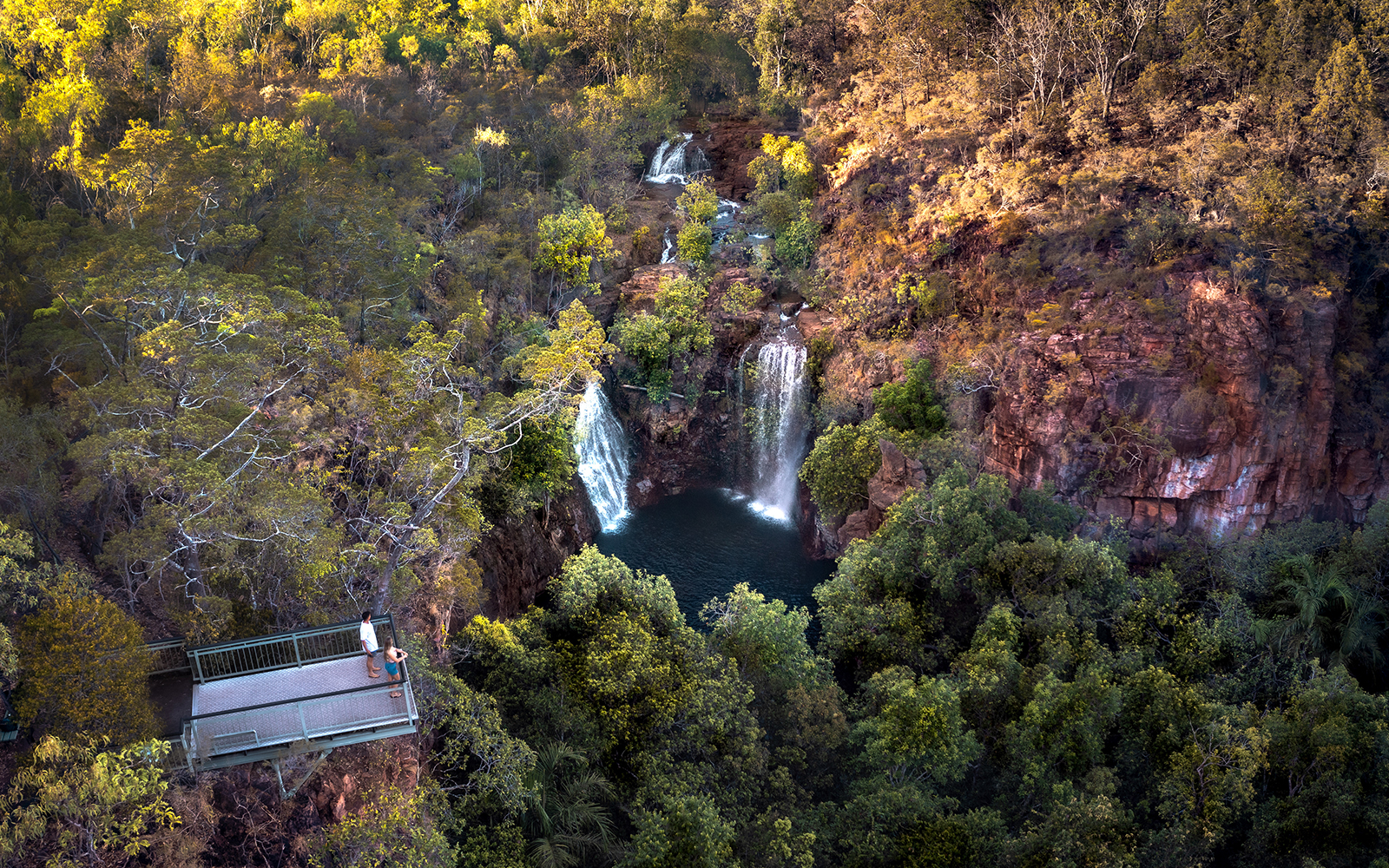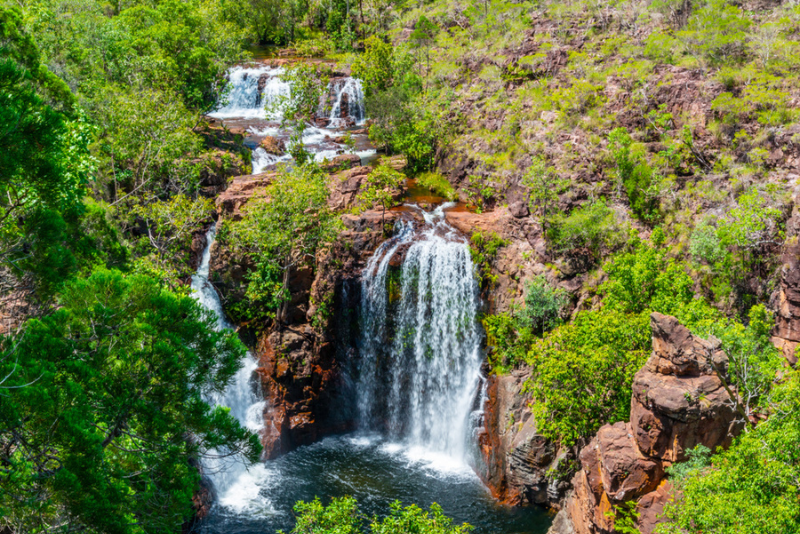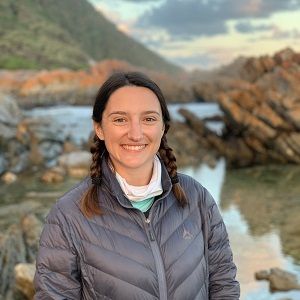Litchfield National Park: Day Trips and Tours from Darwin
Deep within the Australian Outback lies Litchfield National Park. This diverse region is pulsing with a vibrant history of over 20,000 years, as well as a natural landscape that is truly jaw dropping.
From thundering waterfalls and crystal-clear swimming holes to staggering termite mounds, these lands are a nature lover’s paradise. Day trips to Litchfield National Park from Darwin provide visitors with a chance to escape their daily lives and reconnect with the earth.
Deep within the Australian Outback lies Litchfield National Park. This diverse region is pulsing with a vibrant history of over 20,000 years, as well as a natural landscape that is truly jaw dropping.
From thundering waterfalls and crystal-clear swimming holes to staggering termite mounds, these lands are a nature lover’s paradise. Day trips to Litchfield National Park from Darwin provide visitors with a chance to escape their daily lives and reconnect with the earth.

(0/24) checking Musement...
Deep within the Australian Outback lies Litchfield National Park. This diverse region is pulsing with a vibrant history of over 20,000 years, as well as a natural landscape that is truly jaw dropping.
From thundering waterfalls and crystal-clear swimming holes to staggering termite mounds, these lands are a nature lover’s paradise. Day trips to Litchfield National Park from Darwin provide visitors with a chance to escape their daily lives and reconnect with the earth.

Here's all you need to know about Litchfield National Park, one of the most exciting day trips from Darwin.
How to get to Litchfield National Park from Darwin?
Litchfield National Park is located close to the town of Bachelor in the Northern Territory of Australia. It is approximately 110 kilometers from the city of Darwin.
From Darwin to Litchfield National Park by car
The journey to Litchfield National Park by car takes just over an hour. You’ll head south out of the city, following the A15.
You’ll continue south all the way, finishing your journey along the B30 and entering the northern part of the park.
Guided tour to Litchfield National Park from Darwin
Alternatively, make the jaunt to Litchfield National Park via a guided excursion and leave the organization to your operator.
Most of these day trips last between 11 and 12 hours, leaving Darwin between 7 AM and 8 AM, although it is possible to select a longer tour that lasts 5 days.
What is the typical itinerary?
Some day trips to Litchfield National Park begin with a convenient hotel pickup, while others meet in a centrally-located destination in the city.
You’ll be informed of the meeting point in advance so that you’ll be able to arrange your transportation ahead of time, making for a seamless day tour. Once you board your vehicle, you’ll set off for the national park, through the wilderness of the Australian Outback.
Once you reach Litchfield, you may participate in a boat cruise along the Adelaide River, seeking out the shy crocodiles that blend so easily into the waters.
Alternatively, you might opt out of a cruise and instead journey straight to the main highlight of the park — its impressive termite mounds.
These range in height, from 2 to 7 meters, depending on whereabouts in the region you are, and you can learn about the creation process from your knowledgeable guide.
Hop between the park’s numerous waterfalls, only pausing to enjoy a local lunch. After spending hours swimming, lounging and exploring these falls, you’ll return to Darwin where your Litchfield National Park day tour ends.
Alternatively, you may choose to opt for a multi-day tour, which journeys to several other destinations alongside Litchfield National Park.
On these excursions, you’ll explore each location over 1 or 2 days and stay in accommodation nearby. Then, after a peaceful night’s slumber, you’ll hop back into your vehicle with your luggage and move on to the next region.
What kinds of tours are available to go to Litchfield National Park?
There are several types of Litchfield National Park day tours, which cater to everyone's interests.
Guided tour to Litchfield National Park from Darwin
After traveling the scenic route from Darwin, your day trip to Litchfield National Park begins by admiring the unique sight of gigantic termite mounds, some of which measure up to 7 meters in height.
Witness streams of water furiously tumbling down the cliffs of Florence Falls before sinking into its refreshing plunge pool.
Journey through the park to two more roaring waterfalls, where you can choose to take another dip or simply appreciate the spectacular view of Mother Nature’s creations.
Day trip to Litchfield National Park with jumping crocodile cruise from Darwin

Alternatively, hop on a boat early in the morning to cruise down the Adelaide River while the myriad of wildlife species are at their most active.
As your vessel meanders gently along the water, you may see the park’s most famed reptile — the saltwater crocodile.
Measure yourself against colossal termite mounds, swim in rock pools and be awed by tremendous waterfalls before returning to Darwin.
5-Day tour to Litchfield National Park plus Kakadu National Park from Darwin
This multi-day tour of Northern Australia begins at Kakadu National Park, where you'll discover aboriginal rock art — depicting human life over 20,000 years ago.
Learn about the tribes who once inhabited this region, ascend to panoramic lookout points and surround yourself with spectacular natural scenery.
Upon reaching Litchfield National Park, you'll have the option to see a cunning crocodile up close and explore its iconic waterfalls.
How much does a day trip to Litchfield National Park from Darwin cost?
Basic Litchfield National Park day trips cost approximately US$130 per person, which includes a driver-guide and lunch. If you wish to embark on a jumping crocodile cruise, you can book an excursion that includes one for the same price.
You can expect to pay around US$1,560 per person for a 5-day tour of Litchfield National Park and the Northern Territory of Australia. This price covers your accommodation, as well as meals.
What will you see and do?

Litchfield National Park covers a huge expanse of over 1,500 square kilometers and attracts hundreds of thousands of tourists per year, partly because of its links to Aboriginal history.
Several tribes inhabited this region of Australia, including the Kungarakan and Marranunggu people, and the area was unexplored by Europeans until the 19th century. Frederick Henry Litchfield led the first expedition to the region in 1864, and the park was subsequently named after him.
One of the most fascinating sights of any Litchfield National Park day tour is the magnetic termite mounds that have towered majestically over the landscape for more than 100 years.
The process of creating these mounds is intriguing and time-consuming. From collecting grass stalks to defending the mound as it grows, each termite has its own role and is crucial in creating these natural masterpieces.
Litchfield National Park is home to several waterfalls, some of which you can dive into and explore up close. Wangi Falls is one of the most popular swimming spots, because of its sizeable plunge pool and striking surroundings. Visitors can also explore the picturesque pool of Buley Rockhole — nature’s answer to a spa.
The park is a haven for a plethora of creatures, both in the water and on land. Kangaroos, wallabies, dingoes and sugar gliders all roam the rocky terrain of the Australian Outback. Over 150 types of birds can be found gliding gracefully across the skies over Litchfield including yellow orioles, black kites and dollarbirds.
Saltwater crocodiles can be found drifting effortlessly along the rivers of the park in the monsoon season (between October and April), some of which measure over 3-meters long. While these ancient creatures often have a bad reputation, it is enchanting to see them swimming happily in their natural habitat.
Crocodiles leave the region during the dry months and the main swimming spots are thoroughly checked by park rangers before being opened to visitors. While taking a dip is perfectly safe during this time, you should ensure you only swim in designated pools.
When is the best time to visit Litchfield National Park?
The best time to plan a day trip to Litchfield National Park is between May and September when the days are dry, and temperatures range from 31 to 37 degrees Celsius. During this season, all areas of the park will be accessible to you and the climate will feel the most manageable.
If you opt to visit the park during the wet season, you may miss out on seeing some of its attractions, depending on the weather and accessibility of the paths. However, you will also discover the falls at their most spectacular and stand the best chance of seeing a crocodile.
What other day trips can you do from Darwin?
- Day trips to Katherine Gorge from Darwin
- Corroboree Billabong day tours from Darwin
- Day tours to Nourlangie from Darwin
Travel tips
- Opt for a day trip to Litchfield National Park that includes a jumping crocodile cruise as these cost no more than other excursions.
- Head to the national park as early as possible for a peaceful tour that avoids crowds.
- If you wish to explore as much of the park as possible, avoid traveling there during the wet season, from October to April, when some trails close.
- Litchfield National Park excursions include a fair amount of walking over rough terrain, so ensure you’re wearing suitable shoes.

